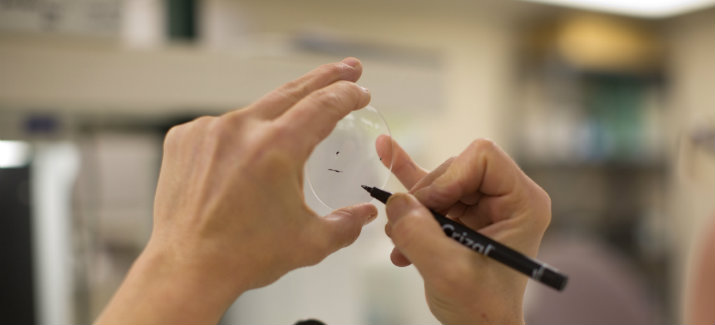Lens options
Eyeglasses lenses and terminology can sometimes be tricky because opticians and patients use different words. Our opticians are trained in how to read an eyeglass prescription and will walk you through different lens options, including materials, coatings and tints that are available. The Mayo Clinic Optical Laboratory processes eyeglasses with all kinds of lenses. When buying eyeglasses at Mayo Clinic Optical, you will be guided and measured by a certified optician to make sure your lenses are fitted properly.
Basic lens vocabulary
Single Vision - Single vision is an all-purpose lens that is available in all materials and provides vision correction for one viewing area only. It can be for distance, intermediate or near.
Bifocals - Bifocal is designed for two corrective distances. Most people use it for far and near distances. Some people may use it for intermediate and near.
Trifocals - Trifocal is a lens like a bifocal, but it has one more additional line and an intermediate section for you to use.
No-line progressive - This lens allows you to see at all ranges distance, intermediate, and near without seeing a line. It is a blended lens that's also called a no-line bifocal, no-line trifocal or multifocal.
Office lens - This lens is designed for computer use and also other intermediate and close up activities. It is very helpful if you are sitting at the computer for a long period of time. The computer lens is a custom designed lens to provide the best vision for you while working on the computer.
Pupillary distance (PD) measurement - This is a measurement required for manufacturing your eyeglasses. It is taken when you order your eyeglasses and is not a standard part of your eye exam. This precise measurement allows the lenses to be properly aligned with your eyes so that the prescription will work. This measurement is different for distance and near, so it depends on the type of eyeglasses being ordered.
Segment height measurement - This is a measurement needed for any multifocal lens. The measurement varies depending on the frame chosen and how the frames fit on your face. This measurement allows the lab to properly align the lenses for proper vision when reading.
So many choices
Many of the items above will depend on your prescription, but you have a lot of choices too. The optician will walk you through the process and help determine what will work best, taking into account your prescription, lifestyle and needs. The links below will take you to a little more vocabulary of lens options.
